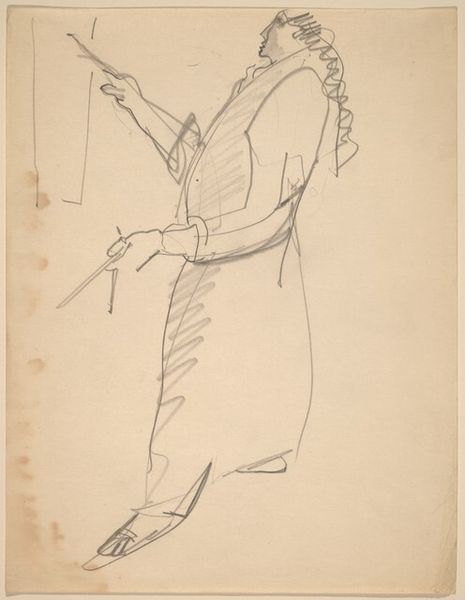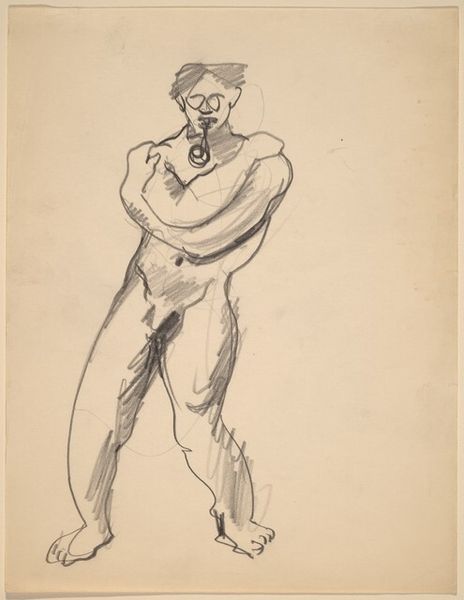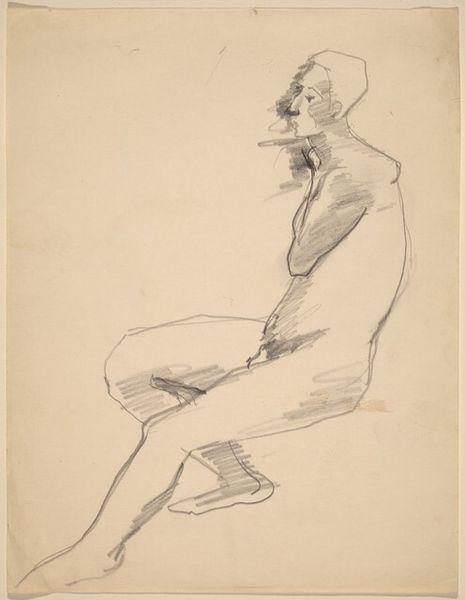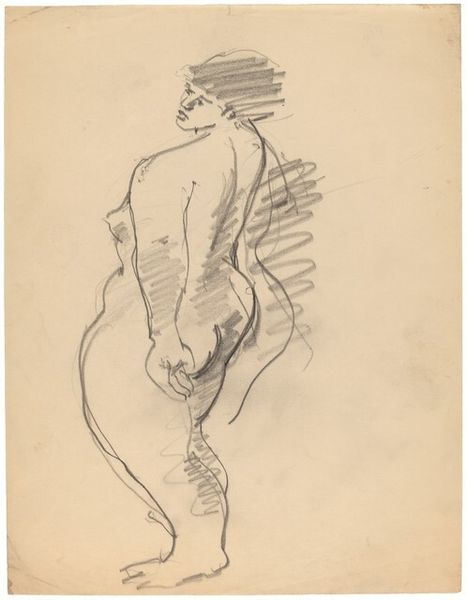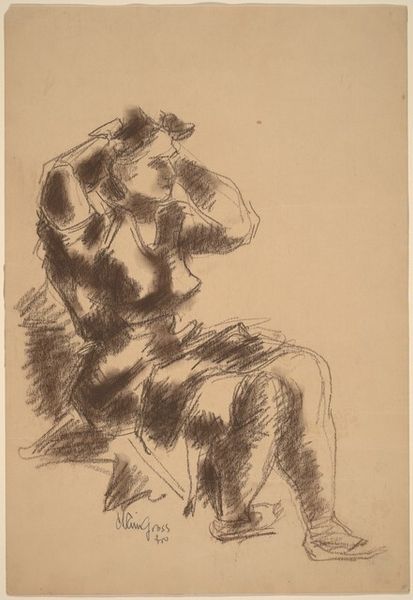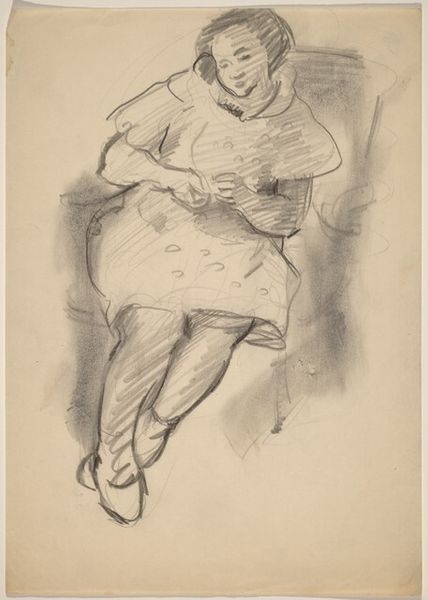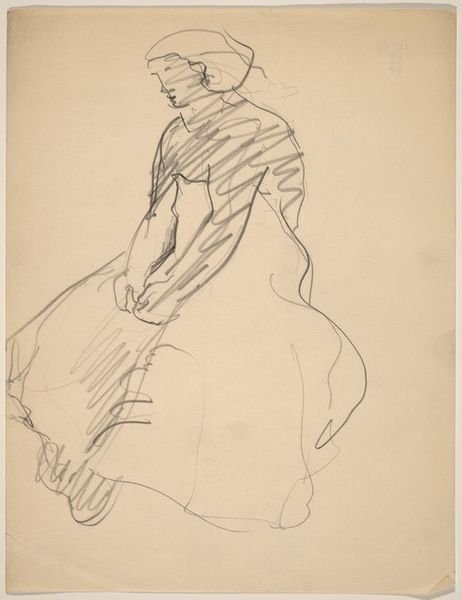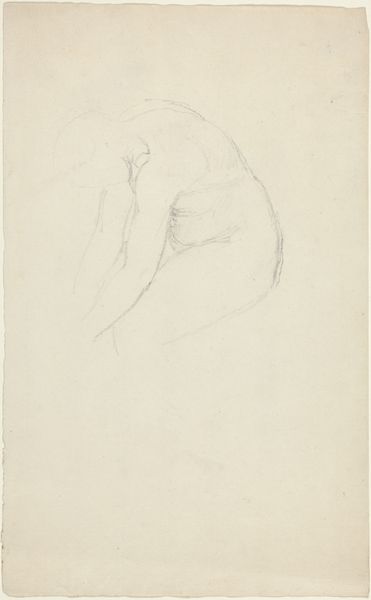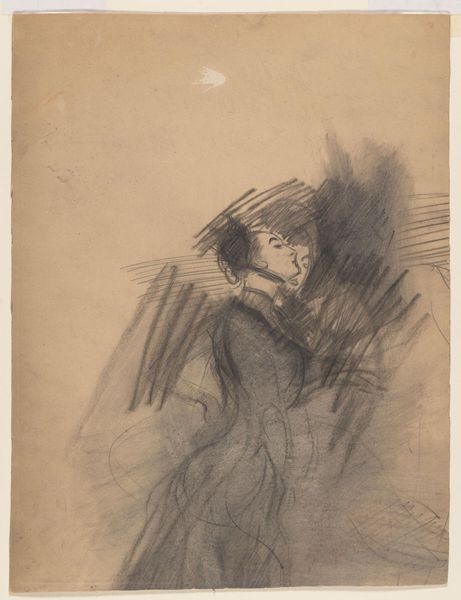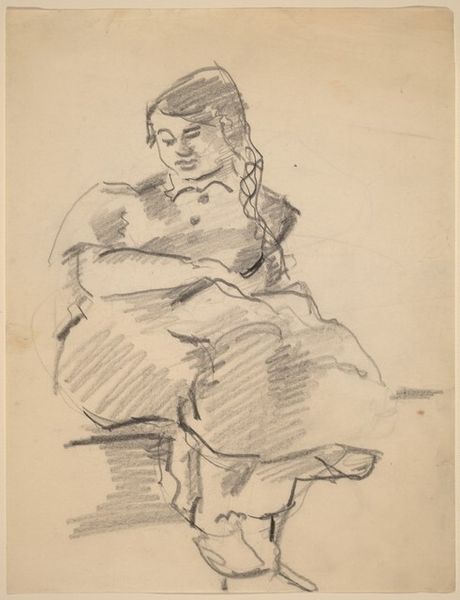
drawing, pencil
#
portrait
#
drawing
#
figuration
#
pencil drawing
#
pencil
Dimensions: overall: 30.4 x 21.6 cm (11 15/16 x 8 1/2 in.)
Copyright: National Gallery of Art: CC0 1.0
Editor: Here we have Mark Rothko's pencil drawing, "Standing Female with Arms Clasped Behind Back". It has an unfinished quality that lends it a very vulnerable feeling. What strikes you about this piece? Curator: The clasped hands behind the back immediately suggest restraint, perhaps even a societal constraint on female expression, echoing historical periods where women's autonomy was limited. Do you notice how the sketch's lines, though simple, create a figure that appears burdened? Editor: Yes, the lines around the shoulders and head seem heavier than the rest of the figure. I almost feel a sense of shame emanating from her posture. Curator: Indeed. The averted gaze, absent facial features—all amplify this sense of internalized pressure. Rothko often used the human form to convey fundamental emotional experiences. How do you think this image relates to broader themes of identity and self-representation? Editor: I see a timeless struggle – an individual battling societal expectations. It's compelling how a few pencil strokes can evoke so much internal conflict. Curator: It's remarkable, isn't it? The lack of detail invites the viewer to project their own understanding of this struggle. It raises questions: Is this resignation, defiance, or a complex mixture of both? Rothko uses minimal visual language to unlock profound psychological depth. Editor: That’s true, the ambiguity is what makes it stay with you. Thanks for illuminating the cultural context and emotional depth within this drawing. Curator: My pleasure. Hopefully, you will start considering how our contemporary views of portraiture, identity, and female representation interplay with artistic depictions from the past.
Comments
No comments
Be the first to comment and join the conversation on the ultimate creative platform.


